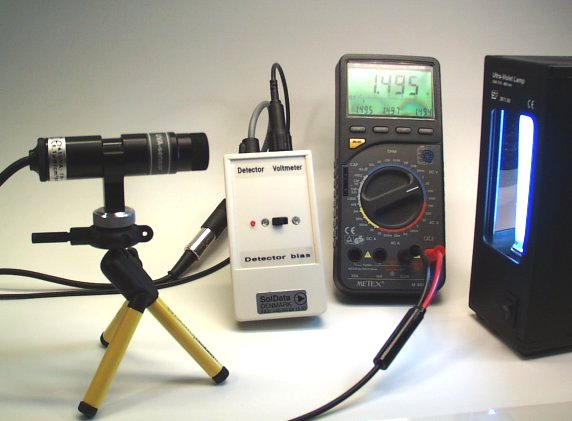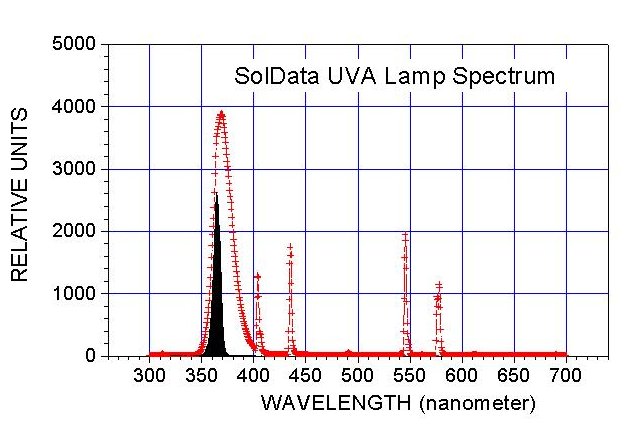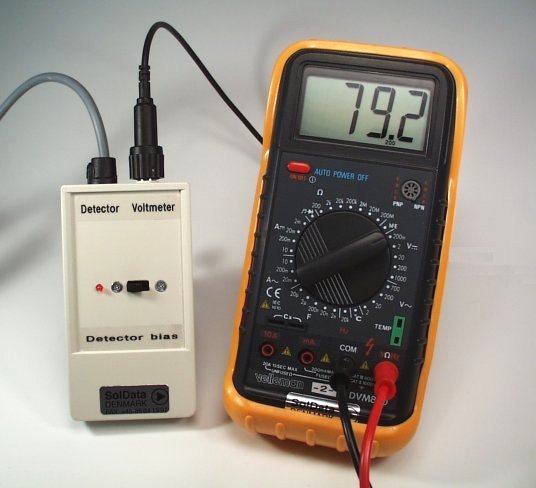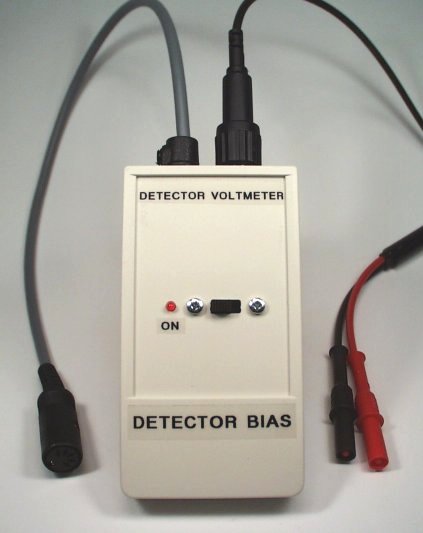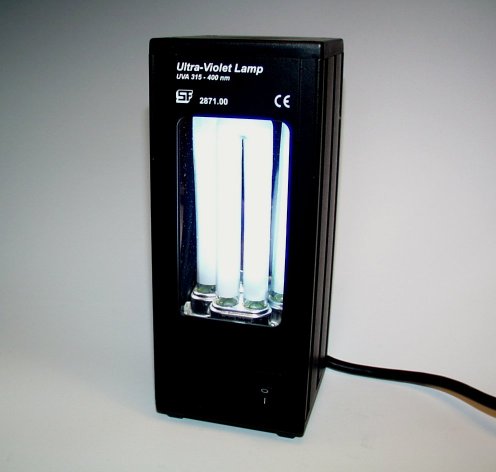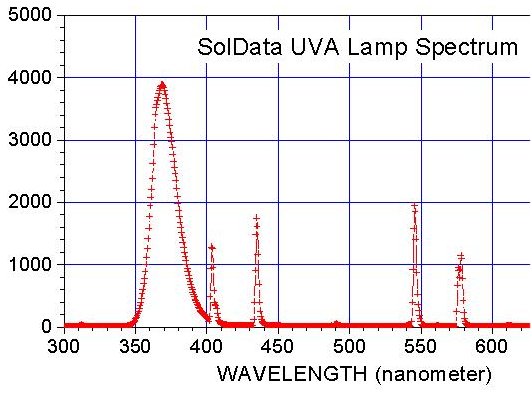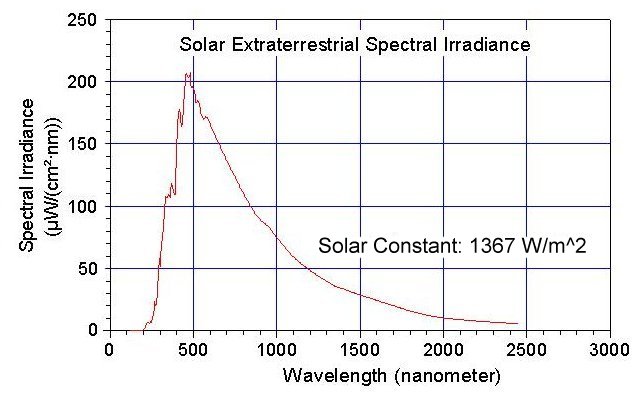SPECTRAL RESPONSIVITY
The spectral responsivity of the UVA instrument is primarily determined by the transmittivity of the interference filter. The figure at the right shows the measured transmittivity for a typical SolData instrument. The off peak rejection of radiation is in excess of 106. To test this property expose the radiometer to a strong UVA source such as direct sunlight. Cover the aperture with a high pass filter cutting off all radiation below 400 nanometers but with high transmittance above 400 nm. The instrument output should fall to zero, confirming that off peak radiation is not being measured.
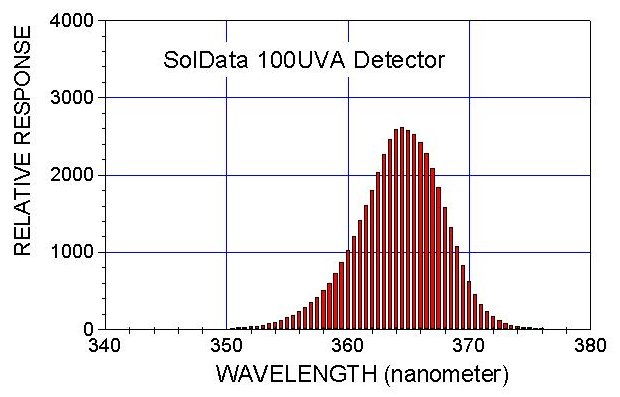
UVA Detector Spectral Response
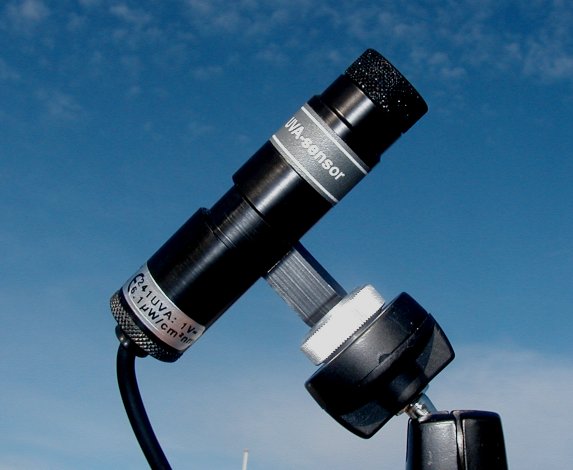
The SolData UVA detector uses a Hamamatsu silicon photodiode and a narrow band filter. Used with a solar tracker and data logger direct solar irradiance data can be collected.
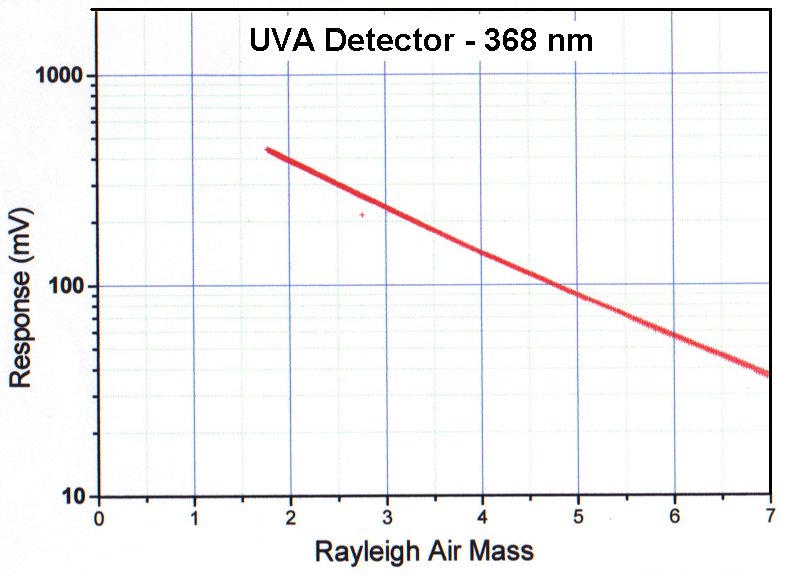
This solar irradiance data at 368 nm is from 25 July 1999 in northern Greenland (76.5 N). The Langley plot shown here can be extrapolated to outside the atmosphere (to air mass zero) for calibration against known extraterrestrial solar irradiance spectra.
| Mass: | 110 gram |
|---|---|
| Diameter: | 25 mm |
| Length: | 100 mm |
| Cable: | 120 cm, 5 pole DIN |
| Detector: | Hamamatsu (Si) |
| Spectral response: | 360-370 nm |
| Spatial response: | Directional |
| Supply voltage: | 5-12 V DC (< 1 mA) |
| Output voltage: | 1 volt/10 µW/(cm2•nm) |
Click here for UVA units of measurement.
| Use a SolData battery box (type 102DBX) and a standard digital voltmeter as your readout. | ||||||
|---|---|---|---|---|---|---|
| The 5 pole DIN connector is compatible with the widely used PASCO Science Workshop ®. | ||||||
|
5 POLE DIN CONNECTOR PIN CONNECTIONS
|
